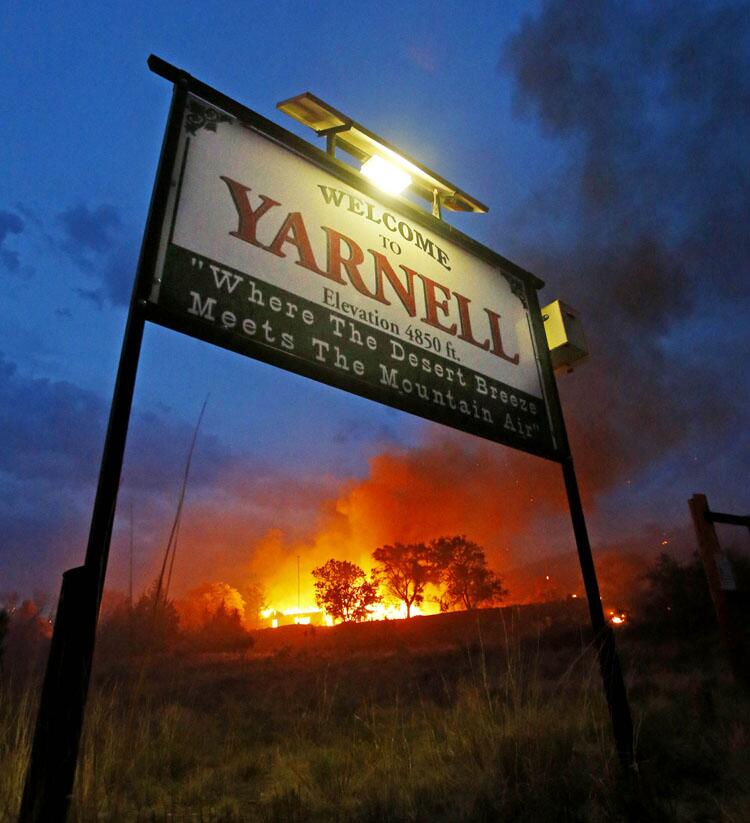 |
| Post In Memory: Granite Mountain Hotshots, the 19 firefighters who died battling the Yarnell Hill Fire on June 30, 2013. |
The original ten Standard Firefighting Orders were developed in 1957 by a task force commissioned by the USDA-Forest Service Chief Richard E. McArdle. The task force reviewed the records of 16 tragedy fires that occurred from 1937 to 1956. The Standard Firefighting Orders were based in part on the successful "General Orders" used by the United States Armed Forces. The Standard Firefighting Orders are organized in a deliberate and sequential way to be implemented systematically and applied to all fire situations.
Shortly after the Standard Firefighting Orders were incorporated into firefighter training, the 18 Situations That Shout Watch Out were developed. These 18 situations are more specific and cautionary than the Standard Fire Orders and described situations that expand the 10 points of the Fire Orders. If firefighters follow the Standard Firefighting Orders and are alerted to the 18 Watch Out Situations, much of the risk of firefighting can be reduced.
Standard Firefighting Orders
- Keep informed on fire weather conditions and forecasts.
- Know what your fire is doing at all times.
- Base all actions on current and expected behavior of the fire.
- Identify escape routes and safety zones and make them known.
- Post lookouts when there is possible danger.
- Be alert. Keep calm. Think clearly. Act decisively.
- Maintain prompt communications with your forces, your supervisor, and adjoining forces.
- Give clear instructions and insure they are understood.
- Maintain control of your forces at all times.
- Fight fire aggressively, having provided for safety first.
- Fire not scouted and sized up.
- In country not seen in daylight.
- Safety zones and escape routes not identified.
- Unfamiliar with weather and local factors influencing fire behavior.
- Uninformed on strategy, tactics, and hazards.
- Instructions and assignments not clear.
- No communication link with crewmembers/supervisors.
- Constructing line without safe anchor point.
- Building fireline downhill with fire below.
- Attempting frontal assault on fire.
- Unburned fuel between you and the fire.
- Cannot see main fire, not in contact with anyone who can.
- On a hillside where rolling material can ignite fuel below.
- Weather is getting hotter and drier.
- Wind increases and/or changes direction.
- Getting frequent spot fires across line.
- Terrain and fuels make escape to safety zones difficult.
- Taking a nap near the fire line.
Source: http://www.fs.fed.us/fire/safety/10_18/10_18.html
---------------------------------------------
No comments:
Post a Comment
CAL FIRE NEWS LOVES COMMENTS...
- Due to rampant abuse, we are no longer posting anonymous comments. Please use your real OpenID, Google, Yahoo, AIM, Twitter, Flickr name.